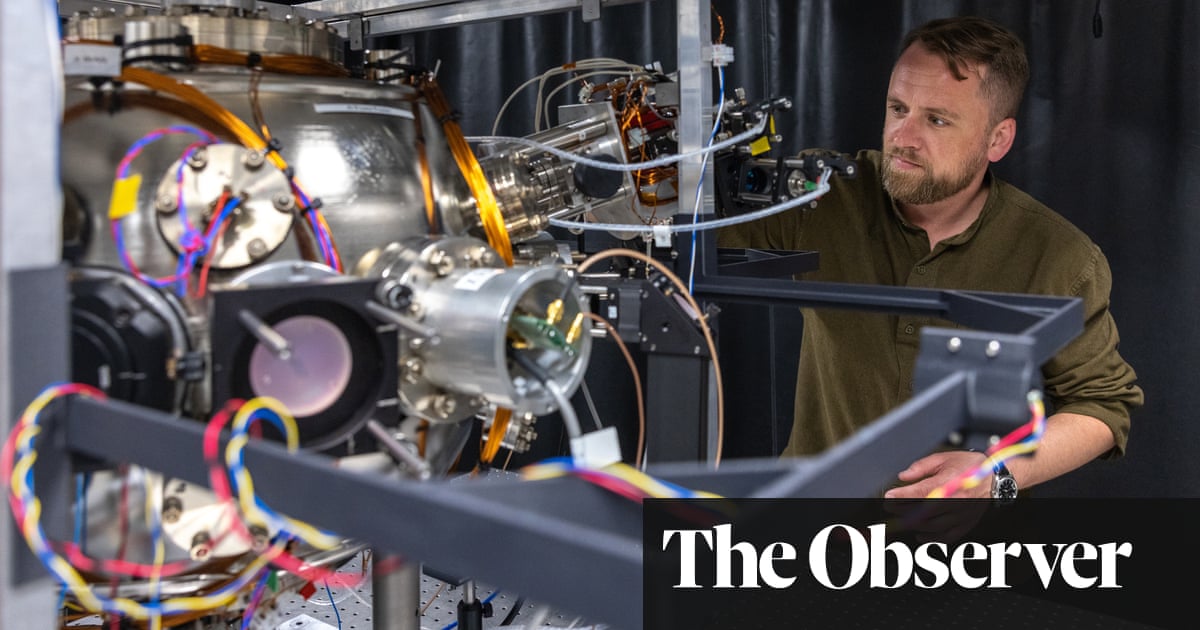Phones have had accelerometer/gyros for a while now. Problem with pinpointing one’s location is how to get a starting fix and how to deal with drift and loss of signal.
The way devices have dealt with it is to periodically confirm and baseline with a satellite fix.
If this method does away with all that, it could remove the reliance on overhead signals and those trying to jam them in hostile zones.
Pretty cool. Lots of potential.
The article describes the device working in ways that violate relativity, but the actual technical description is a lot cooler.
It’s not a quantum compass, really. It’s a quantum accelerometer and gyroscope. The hope is that its accuracy will lend itself to long-term inertial guidance, which normally needs regular GPS updates to correct errors which accumulate over time.
a lot cooler
ice what you did there
long-term inertial guidance
this is exactly what I got from the article: a more accurate inertial navigation. What part violates relativity?
It is being used to develop a quantum compass – an instrument that will exploit the behaviour of subatomic matter in order to develop devices that can accurately pinpoint their locations no matter where they are placed,
[…]
The aim of the Imperial College project […] is to create a device that is not only accurate in fixing its position, but also does not rely on receiving external signals.
These statements imply the device can know exactly where it is in space just by measuring some purely internal quantum effect, which conflicts with the principles of Lorentz invariance and relativity.
Both are constructed around the same idea that there’s nothing special in the laws of physics that changes with where you are or how fast you’re going. That observation is what led the conclusion that the speed of light is the same in every reference frame, and to Einstein developing the theory of relativity.
In reality, the device needs an external signal to learn its initial position. And it’s unlikely to be perfectly accurate so it may still need periodic updates, just hopefully a lot less frequently.
The London Underground is actually kind of a dumb use-case because it’s fixed infrastructure. You can just have something like RFID tags around the track that the train reads as it goes by. And there’s going to be sensors in the track that report trains’ presence to a central control room. It’s just a good setting to test the device.
What it’s really potentially quite useful for is nuclear submarines since they can stay underwater pretty much as long as their food supplies last, and knowing their position without using sonar or being able to receive GPS signals is quite important for navigation and obstacle avoidance. But the author was probably told to downplay potential military applications.
It would certainly make jamming of guided weapons quite difficult; missiles, drones, UAVs, etc.
You can’t use it to determine both your location and velocity at the same time. (/s)
“replacing GPS” is a stretch, but it’s some sci-fi tech to use when GPS can’t be used
Can anyone explain how lasers are used to cool? I would prefer ELI18 but i probably need this ELI5
If you use the right color of light, then the doppler effect means that the atoms will only absorb (and be pushed by) light that they are headed towards. That means that the light will always act as a brake for the atoms and never an accelerator, so the fluid will cool. If you do this from all directions, the fluid will start to stay still in one place and get very close to absolute zero. Idk, I just read the Wikipedia article, but that is my best attempt at an ELI18
I love you just a little bit!
You got it pretty much on point. Shooting a laser at atoms is like shooting a machine gun at an indestructible target. If it moves towards you, you can slow it down. But preventing it from accelerating when the target is stationary is where quantum mechanics comes in. That is your explanation: The laser light only acts as a force when the light is resonant with the atom and the Doppler effect means that the resonance condition changes depending on the speed of the atoms.




